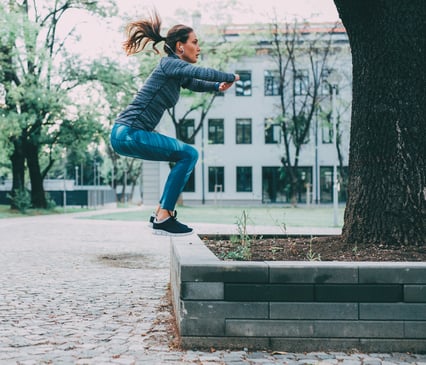 In a world where situations are ever-changing and a new “normal” is developing, athletes around the world are scrambling to adapt to their new training environments. For most, this new environment is where you are probably reading this now, your home. For the time being and for many people, traditional training methods of using barbells, dumbbells, kettlebells, etc. have morphed into substitutions of paint cans, backpacks, gallon jugs, or just about anything that can act as the “resistance” that your body has become accustomed to using.
In a world where situations are ever-changing and a new “normal” is developing, athletes around the world are scrambling to adapt to their new training environments. For most, this new environment is where you are probably reading this now, your home. For the time being and for many people, traditional training methods of using barbells, dumbbells, kettlebells, etc. have morphed into substitutions of paint cans, backpacks, gallon jugs, or just about anything that can act as the “resistance” that your body has become accustomed to using.
Am I Going to Lose Everything I Gained in the Gym?
The first thought you probably had when this situation came about was, “I’m going to lose everything I’ve worked so hard to gain in the gym.” I guess that because it was one of the first things that passed through my mind, and now I believe that a well-equipped gym is one of the most taken-for-granted things I had in my life. It was always there. I could do just about anything I wanted or needed to do there. If the work I needed to do didn’t get done, it wasn’t the gym’s fault; it was my own.
If the work I needed to do didn’t get done, it wasn’t the gym’s fault; it was my own.
So now what? You are at home, you have a minuscule amount of equipment compared to what you had before (here’s another blog with some basics to consider), and your motivation may be low. The easiest thing to do would be the bare minimum and hope for the best when you can get back to the gym. The right thing would be to figure out a way to adapt your program to your environment and change the “maintain” mindset to the “gain” mindset. And I’m here to help you do that. The following are the essentials I believe can help you construct your home-based workout and continue to build on the progress you have made in the gym.
The Four Home-Training Building Blocks
As a coach, there are four main training blocks that can be completed at a very high level from home: mobility, power, strength, and conditioning. Follow along as I break them down!
Mobility
For many athletes (yes, me included), mobility is an area where we can always improve. This part of training is often overlooked or not taken as seriously as it should be. I’m here to tell you, being at home gives you the perfect reason to make this a focal point of your training. I say this because for many mobility exercises (shoulder/t-spine, hip, and ankle exercises), a big array of equipment is not needed. A couch or chair can serve as a perfect platform for you to improve mobility with very little time or effort setting up.
Power
No matter what sport you participate in, power development surely plays an integral part in your performance. In the gym we use medballs, boxes, and barbells to help foster this development. But at home, you can simply use an open space in your home/garage/outside to do this as well. Many “ground-based” plyometrics can be performed with minimal, if any, equipment. You can use vertical and broad jumps (both one- and two-legged) and various plyometric push-up variations, which should provide your body that same “explosive” feeling you have learned to produce. For the jumping exercises, this is a great time to work on the most important part of the movement, the landing.
Strength
This section might pose the biggest challenge to you simply because the heavy weights you are used to using are no longer accessible. I’m here to tell you that with a little creativity, you can still make improvements. One of the easiest ways to make simple bodyweight exercises more challenging is to elevate one of your points of contact, i.e. elevating your feet for push-ups or putting your back leg up on a couch or chair during split squats. Using a backpack full of books can serve as the extra resistance during these exercises, so dust off your old heavy college books and repurpose them.
Remember this as well: it’s not always about using heavy weight with low reps. If you are used to training in this fashion, doing more repetitions will help with your strength-endurance.
Conditioning
I believe that cardiovascular or conditioning work should be the easiest for you to adapt to while at home. With the exception of some of the specialized equipment you use in the gym (sleds, bikes, etc.), a lot of the training you do during this block requires only bodyweight resistance. Circuits (wall sits, mountain climbers, burpees), running (long-slow distance, interval training), and core work (plank and side plank variations, glute bridge variations) can all be performed with minimal equipment.
Take into account your “work-to-rest” ratio, which is how long you work versus how long you rest. Depending on what intensity you are working at, how long you are working for, or what activity you are doing, these numbers can be adjusted to fit your current fitness level. Generally, the longer your rest periods are compared to your work periods, the easier it will be. If you are unsure, start with 1-minute work to 1-minute rest and adjust for each subsequent workout as the days pass.
Which Will You Choose: Continued Progress or a Downhill Slide?
I leave you with this: the duration of the new normal can go one of two ways, the continuation of progress and improvements of athletic areas you need to work on OR a downhill slide of progress that leaves you fighting to get back to your current athletic state for the following months or years. Which one will you choose? If the work you need to do doesn’t get done, it wasn’t the home gym’s fault.
If the work you need to do doesn’t get done, it wasn’t the home gym’s fault.
This is a new challenge that you should accept and meet head-on with the attitude that nothing can derail your progress and a drive to continue to improve. In a few months, let’s look back on these days with pride knowing that you did everything in your power to get better.

This blog was written by Alex Soller, Athletic Performance Coach and NIFS trainer. To find out more about the NIFS bloggers, click here.
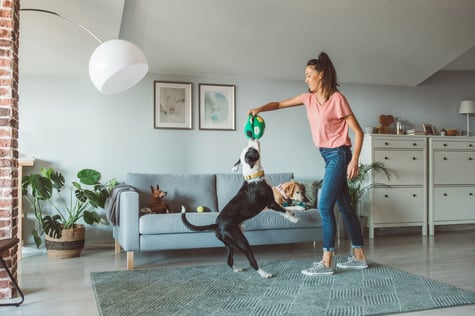 When you hear about fitness and wellness, one of the first things that comes to mind is getting a workout, usually at a gym, fitness center, or club. Some people can get exercise in other ways, such as outdoor activities and sports, while many others receive plenty of fitness at the workplace (think lumberjacks, steel workers, and factory workers). If none of these sounds like you or if you and you feel as though the fitness route is a tough road to travel, there is hope. There are things you do in your everyday life that give you an opportunity to burn calories.
When you hear about fitness and wellness, one of the first things that comes to mind is getting a workout, usually at a gym, fitness center, or club. Some people can get exercise in other ways, such as outdoor activities and sports, while many others receive plenty of fitness at the workplace (think lumberjacks, steel workers, and factory workers). If none of these sounds like you or if you and you feel as though the fitness route is a tough road to travel, there is hope. There are things you do in your everyday life that give you an opportunity to burn calories.

.jpg?width=513&name=GettyImages-1216458718(1).jpg) In one way or another I think it’s safe to say that the spread of this virus has affected all of us in the last few weeks. And for some, it has become life-changing! As parents of a school-aged kid, my husband and I have had some tough conversations with our kindergartener explaining why he won’t be seeing his friends or teacher at school for a while, if at all. Not only have we had to have tough talks, we’ve had to become pretty creative in how we keep him active and engaged.
In one way or another I think it’s safe to say that the spread of this virus has affected all of us in the last few weeks. And for some, it has become life-changing! As parents of a school-aged kid, my husband and I have had some tough conversations with our kindergartener explaining why he won’t be seeing his friends or teacher at school for a while, if at all. Not only have we had to have tough talks, we’ve had to become pretty creative in how we keep him active and engaged. In a world where situations are ever-changing and a new “normal” is developing, athletes around the world are scrambling to adapt to their new training environments. For most, this new environment is where you are probably reading this now, your home. For the time being and for many people, traditional training methods of using barbells, dumbbells, kettlebells, etc. have morphed into substitutions of paint cans, backpacks, gallon jugs, or just about anything that can act as the “resistance” that your body has become accustomed to using.
In a world where situations are ever-changing and a new “normal” is developing, athletes around the world are scrambling to adapt to their new training environments. For most, this new environment is where you are probably reading this now, your home. For the time being and for many people, traditional training methods of using barbells, dumbbells, kettlebells, etc. have morphed into substitutions of paint cans, backpacks, gallon jugs, or just about anything that can act as the “resistance” that your body has become accustomed to using. 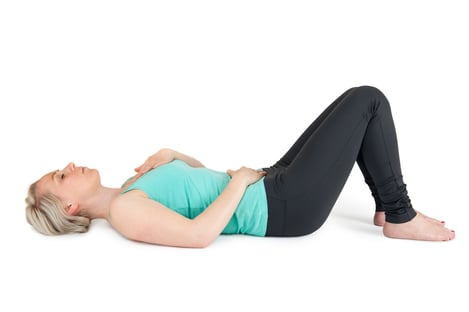 In The Wizard of Oz, Dorothy woke up after a terrible storm in a world she didn’t recognize. The normal that she had known no longer existed. We are “not in Kansas” (or Indiana, for that matter) anymore after COVID-19 erupted around the world. Normal is gone for the time being. Some people have lost jobs and incomes, or are forced to work from home. Some have had or are fighting the disease, and some unfortunately have lost their lives.
In The Wizard of Oz, Dorothy woke up after a terrible storm in a world she didn’t recognize. The normal that she had known no longer existed. We are “not in Kansas” (or Indiana, for that matter) anymore after COVID-19 erupted around the world. Normal is gone for the time being. Some people have lost jobs and incomes, or are forced to work from home. Some have had or are fighting the disease, and some unfortunately have lost their lives.  Whether you are sitting, standing, walking, running, or exercising, having good posture plays an immense role in not only how you physically present yourself, but how your body develops over time. Just like most habits, posture has both good and bad sides, each with distinct effects on your body. Focusing on ways to get the most out of your posture can ultimately give you not only a better workout, but also improved health for many years to come.
Whether you are sitting, standing, walking, running, or exercising, having good posture plays an immense role in not only how you physically present yourself, but how your body develops over time. Just like most habits, posture has both good and bad sides, each with distinct effects on your body. Focusing on ways to get the most out of your posture can ultimately give you not only a better workout, but also improved health for many years to come.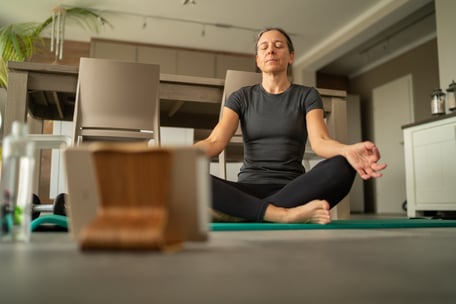 Take these next few weeks or so and use them to your advantage. We know this is an extremely challenging time, and we want to make sure you feel like you are taken care of. Circumstances are tricky right now, so even if you adopt one new technique, consider that a win! Don’t expect yourself to “eat the rainbow” every day, feel like you fall asleep easily at night from a relaxing day working at home in your pajamas, or get in a 10-mile run each morning. While you shelter at home and stay healthy, keep these tips in mind.
Take these next few weeks or so and use them to your advantage. We know this is an extremely challenging time, and we want to make sure you feel like you are taken care of. Circumstances are tricky right now, so even if you adopt one new technique, consider that a win! Don’t expect yourself to “eat the rainbow” every day, feel like you fall asleep easily at night from a relaxing day working at home in your pajamas, or get in a 10-mile run each morning. While you shelter at home and stay healthy, keep these tips in mind.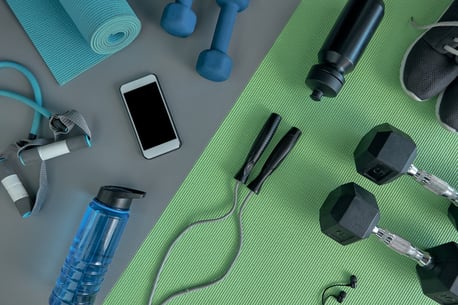 The saying often goes, “success breeds success,” but I’m a big believer that failure leads to just as much and even more success. Being reactive in nature to a situation (as most of our population is) can delay a successful outcome, but often does lead to one. Obviously being proactive, anticipating and avoiding rather than catching and correcting, is a more successful model of living; but we find ourselves in situation we really couldn’t anticipate. There are some lessons to be learned and success that can come from this desperate situation we are all in.
The saying often goes, “success breeds success,” but I’m a big believer that failure leads to just as much and even more success. Being reactive in nature to a situation (as most of our population is) can delay a successful outcome, but often does lead to one. Obviously being proactive, anticipating and avoiding rather than catching and correcting, is a more successful model of living; but we find ourselves in situation we really couldn’t anticipate. There are some lessons to be learned and success that can come from this desperate situation we are all in.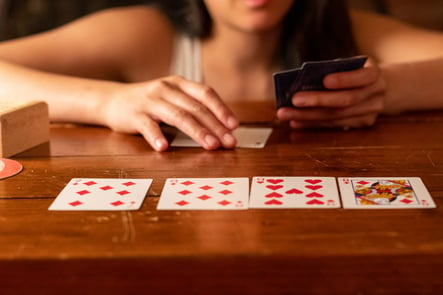 It goes without saying; we’re living through some pretty odd times. With the onset of COVID-19, many of our lives have been flipped on their heads. For some, there has been less structure, and maybe a little more downtime, and that has the potential to make even the sanest of them all go a little stir-crazy.
It goes without saying; we’re living through some pretty odd times. With the onset of COVID-19, many of our lives have been flipped on their heads. For some, there has been less structure, and maybe a little more downtime, and that has the potential to make even the sanest of them all go a little stir-crazy. .jpg?width=404&name=GettyImages-980276548(1).jpg)
 Ingredients
Ingredients